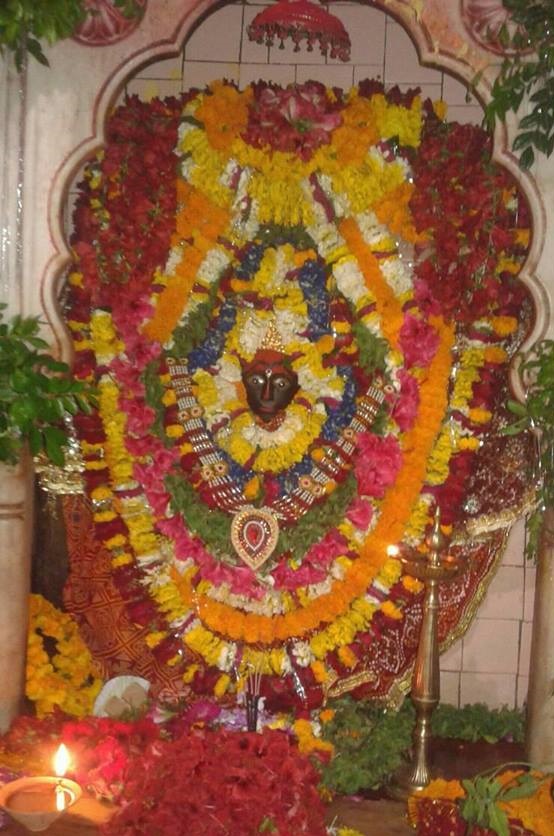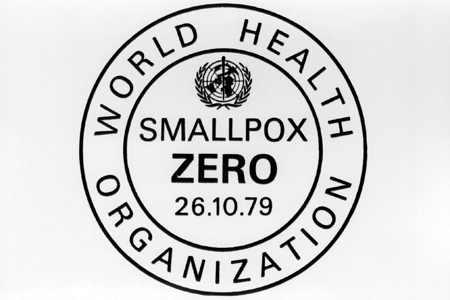At a time when most of us think that the current corona epidemic is the worst ever, let’s not forget that smallpox in the 1950s was probably much worse. Few remember though, because a whole generation (and their parents) have grown up in an environment that has been largely free of scourges. During the 1960s and 70s India conducted massive campaigns to defeat seemingly incurable diseases – smallpox, polio, tuberculosis, measles, malaria and others. Hopefully, corona too will one day be a notch on the belt!
The story of India’s eradication of smallpox is particularly inspiring. Smallpox was a worldwide killer for centuries. In the 20th century alone, over 300 million people were infected internationally; and the fatality rate in some regions was as high as 30% (The corona fatality rate estimate is below 2%). Edward Jenner had invented a modern vaccination method as early as 1796, and by the early 1800s vaccines were shipped to India. In 1805, Mughal Emperor Shah Alam got his grandchildren vaccinated; the Mysore Maharaja ensured that his wife-to-be got the shot too; in Thanjavur, Maharaja Serfoji, a trained paramedic, volunteered to get vaccinated first. More than a million people were vaccinated in the first decade. By the next 150 years, many millions of Indians were vaccinated.
But in India, a million is a microscopic number. A 1963 statistic revealed that 25000 Indians had died of smallpox. To be fair, this was part of 15 million infections annually, all over the world. Vaccination had not penetrated into rural India, and the Indian government was worried. The World Health Organisation, WHO, was equally disturbed. The WHO sent field vaccination teams to cooperating countries all over the world. That is how two remarkable women from ordinary families came to India and became extraordinary achievers.
Cornelia Davis was black and female, an ultra-minority in her Medical School in 1968. She was only one of two black women in her class but overcame stereotypical prejudices to qualify. She wanted to serve the community before going into private practice. She learnt of the WHO smallpox eradication program in India, and volunteered. She landed in Calcutta (now Kolkata). And faced many challenges. Many villages had rarely seen a woman in authority, much less a black American woman. Her own staff held her at arm’s length, because they were unused to her. And the local police suspected her of being a CIA agent. But she gradually won people’s confidence by her sincerity. She even crossed into Bangladesh, to investigate incoming infection across the porous borders. She negotiated with smugglers and tramps until she had completely inoculated everyone along the border. After she moved on to another sector, the grateful villagers invited her back to celebrate their victory over disease. That was an exhilarating moment.
She was later promoted and put in charge of Rajasthan. She had to learn Hindi to be able to communicate there, so she did. She found that deep in the desert, her jeep was quite useless. So, she learnt to ride atop a camel to reach even the remotest villages, and succeeded. Cornelia wrote a popular book, ‘Searching for Sitala Mata’ about her encounter with smallpox.

Sheetala Mata (like her southern counterpart Mariamman), is the widely worshipped village goddess in rural North India. People seek her protection against deadly diseases like smallpox. This was Cornelia’s tribute to Sheetala Mata. (also known as Sitala Mata)
[Detour: Who are these village gods and how are they different from Vedic gods? Watch this short video for the story of Mariamman and other ancient village gods of Tamil Nadu]
The other star of our story is Dr. Mary Guinan. She graduated in chemistry in the 1960s, a time when very few companies hired lady chemists. The Chiclet chewing gum factory hired her, but paid her less than her male colleagues. Soon after, she joined John Hopkins University, where only 10% of the medical students were female. When she completed medical school, she joined WHO, inspired by their goal to eradicate smallpox from the earth. She was the only female in a batch of 39 trainees. She was eager to work in India, but WHO rejected her request because she was female. She applied again. This time she was told that it was not WHO that rejected female volunteers, but India. Mary pointed out that India was headed by a woman Prime Minister, Indira Gandhi, who would brook no gender discrimination. She threatened to write to Mrs. Gandhi. Her application was promptly approved.
She reached Kanpur district in 1975 and was quartered in a humble mud hut in a village. Her team practiced ‘ring vaccination’: they would identify smallpox victims in a village and then vaccinate everyone within a 10-mile radius. She had a vehicle, but her sector was interspersed with rivers and often that vehicle was of no use. A local associate arranged for an elephant for her to ride on. And that’s how Dr. Mary Guinan travelled around Uttar Pradesh. The elephant soon became an inseparable member of the team. In five months, the entire region became smallpox free.
The Indian smallpox eradication program was one of the biggest in the world. It had the Prime Minister’s backing. About 50 international supervisors like Mary and Cornelia, 50 Indian supervisors, 33000 public health officials and 100,000 field workers worked to a common goal. A reward of Rs.100 was given to anyone who could report a case anywhere. The last case was reported in May 1975, but house-to-house searches continued till 1977. India was declared smallpox free in 1977. By 1980, the entire planet was rid of smallpox.

Archives
- January 2022
- December 2021
- November 2021
- August 2021
- March 2021
- February 2021
- January 2021
- December 2020
- November 2020
- October 2020
- September 2020
- August 2020
- April 2020
- March 2020
- February 2020
- January 2020
- November 2019
- October 2019
- September 2019
- August 2019
- July 2019
- June 2019
- August 2017
- February 2017
- January 2017
- October 2013
Featured Posts
- Tales that pots tell: Keeladi excavations AUGUST 18, 2021
- The Last Grand Nawab: Wallajah FEBRUARY 10, 2021
- How Tej Singh became Raja Desingu of Gingee FEBRUARY 5, 2021
- How Shahjahan seized the Mughal throne JANUARY 28, 2021
- Alai Darwaza – Qutub Minar Complex, Delhi NOVEMBER 21, 2020
- Marking History through British buildings NOVEMBER 17, 2020
- The last great queen of Travancore NOVEMBER 7, 2020
- Brahmi and the evolution of scripts OCTOBER 15, 2020
- The Cambodian King of Kanchipuram OCTOBER 14, 2020
- James Prinsep – the man who read the writing on the wall OCTOBER 10, 2020
- Mariamman – the Village Goddess who travelled SEPTEMBER 30, 2020
- Misnamed Monuments of Mamallapuram SEPTEMBER 28, 2020








